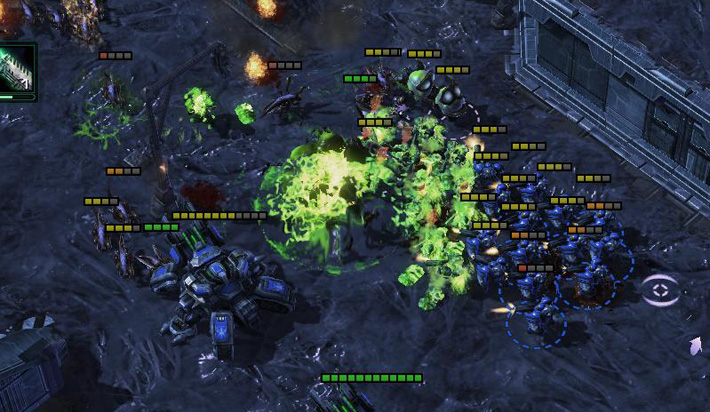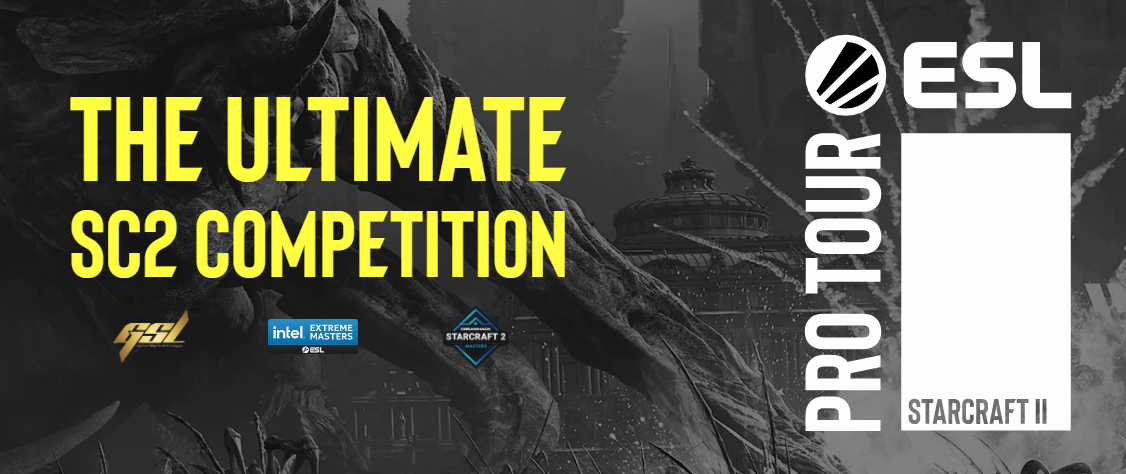I watch eSports. I watch other people play computer games. I’ve done it for a long time now, and it’s a growing sub-culture whose time had seemingly come with COVID, but eSports has missed its moment.
Real Time Strategy (RTS) are the best ones. I find watching RTS far more compelling than other 1vs1 elite traditional sports such as tennis.
There are generally three spheres of play, and every top-tier contestant needs to be ready to react with an intuitive response in all of them faster than a mouse can click.
Where Chess is a game of strategic attrition, RTS players also need to build their army. They need resources to do that and need ‘workers’, pieces who cost resources but can’t fight. So the first sphere of challenge for an RTS player is to balance (or gamble) their income with their army against their opponent, as too much or too little and the other player will roll over them.
They also need to be masters of the fight. This is called ‘micro’, where the player moves each unit individually to maximise their damage output and avoid damage themselves. The true professionals get beyond 400 APM (actions per minute) with their micro and could take down a beginner’s army with one unit, and they do it all-the-while building their base and growing their economy.

Being real time, they also need to be masters of positioning. Armies or strike-forces need to be ready to pounce on an unprotected base or defend the same. The true-elite players battle multiple fights at once. They all multi-task this micro, macro and strategic positioning constantly, some for hours at a time. When you watch an elite-player’s webcam you’d be forgiven for thinking they’re a catatonic stroke victim, but their true artistry is in their mind, fingers and OOS-crippled wrists.

eSport has its similarities to traditional sport, but in a much wider and inclusive manner. The players become heroes and fan-favourites, underdogs and arseholes. Players may excel in some spheres of the game and be bamboozled in others.
And just like the rugby, professional commentators make-or-break a solo-viewing session and explain the game for the idle viewer.
The top-tier StarCraft players in South Korea are bigger than Jesus. They’re dream-boats donning branded team overalls festooned with sponsors and get traded like rugby players to play in teams at special gaming houses.

There are some critical differences with eSports from traditional sports, and I think these have limited the growth of the scene to date (here at least).
For one, as a general rule the players aren’t total hotties. These are regular people doing remarkable things, not bronzed behemoths with rippling muscles. Aside from the violence of the games themselves there is no primal passion or action to watch, just a slack-jawed puppetmaster too busy pulling strings to dance. eSport is a gentleman’s sport, there is no sex or violence.
The brilliance and skill of the olympic athlete is immediately obvious to the average human; we know the terms of reference. The skill of eSport players is too abstracted to be immediately obvious. Likewise, the rules of the game can be confusing. You can’t appreciate a good out-maneuver if you don’t understand the nature of the game. A true appreciation for their skills cannot be gained until you play yourself, and while the physical and social barriers to eSport are lower, the financial and technological requirements are a bit higher than a ball.

The scene is limited by it’s global focus and lack of local competition. There’s no ‘best in Wellington’ StarCraft tournament, not even a best in New Zealand. Professional eSport is a zero-sum game, and you get nothing until you are one of the top players on the planet.
When COVID shut down physical sport, I thought this was eSports’ time to shine. The unwashed public would be introduced to these modern gladiators and be amazed at their talents in a whole new arena of competition unmarked by the passing pandemic.
But it was not to be. We enjoyers of eSport still sit on the fringe and suffer through short bouts of cringe.
I’m pretty sure it’s because everyone still thinks of eSports as a pass-time for nerds. This despite gaming being a $37 billion industry that 66% of the US population partake in. That’s a better ratio than those of us who play rugby; for the health of a sport that brings me such escape I hope our attitude to eSport changes soon.
If you’re interested, I watch StarCraft II and a bit of Company of Heroes 2.
StarCraft II is still the biggest RTS eSport out there despite being more than ten years old. A sci-fi slugfest between three wildly different races, it’d be a challenge for the un-initiated. One of the core aspects of this game is it’s reliability. Units will always do X damage and never miss; players can rely on their deep knowledge of the game to assess how a battle will work out.
Here’s a good game.
Company of Heroes 2 is a WW2 RTS that’s about the same vintage. It has a much smaller scene but makes for an enjoyable watch as the individual units matter more and there’s randomness in the battles. Sometimes a tank will miss a critical shot and the underdog will take the fight, turning things on its head. It’s visually stunning too.
Here’s a good game.

Leave a Reply